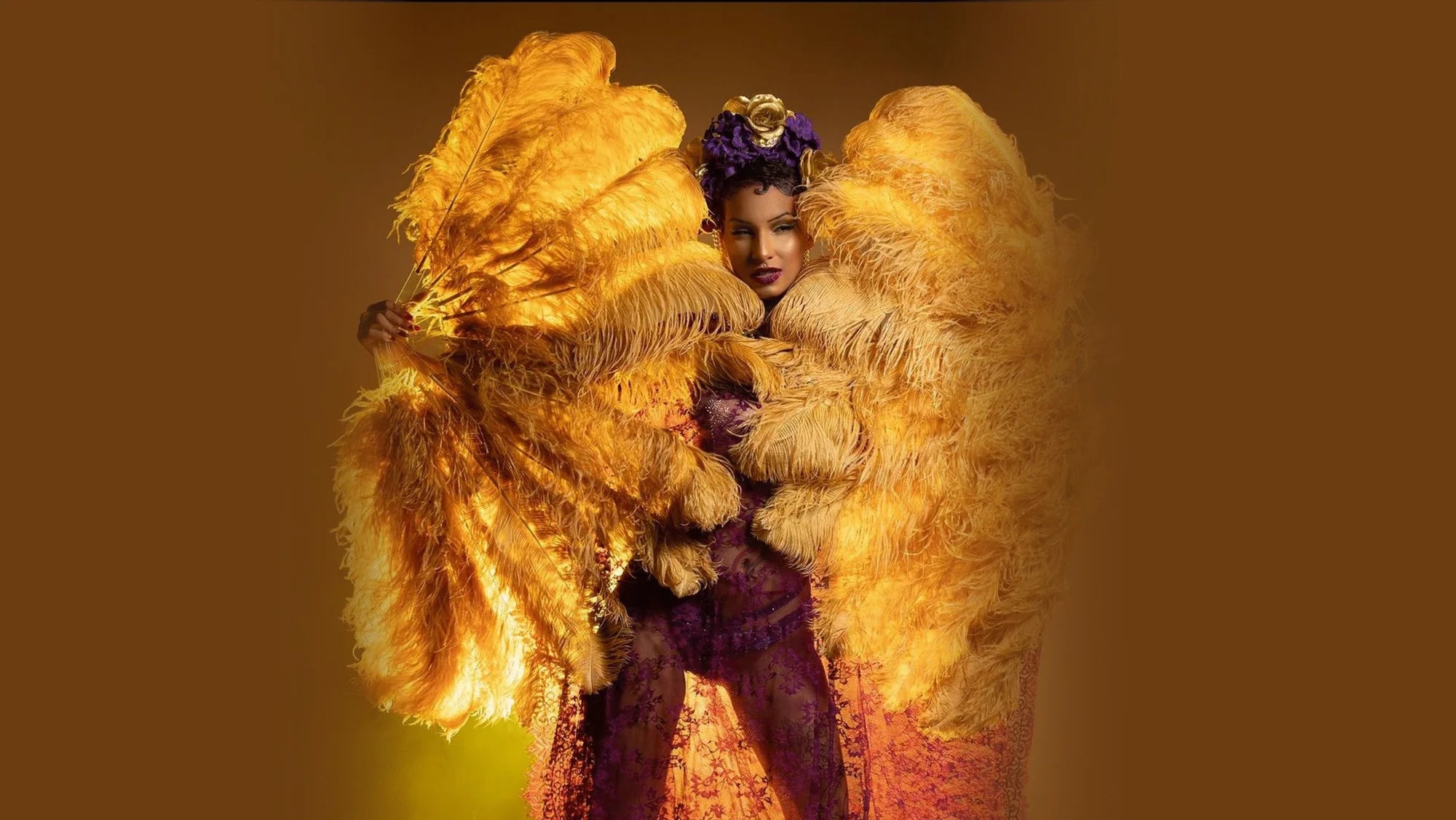
- by Pepper Development
The Art of the Feather Fan: Elegance and Craftsmanship
- by Pepper Development
Feather fans hold a timeless allure, embodying elegance, grace, and a touch of mystique. From their origins in ancient cultures to their prominence in modern fashion and decor, feather fans have captivated hearts and minds across centuries. In this exploration of the art of the feather fan, we delve into the intricate craftsmanship, cultural significance, and enduring appeal of these exquisite accessories.
Feather fans have a rich and varied history, with roots extending back to ancient civilizations such as Egypt, China, and Japan. In these cultures, fans served not only as practical tools for cooling but also as symbols of status, beauty, and social standing. From the opulent ostrich feather fans of Cleopatra's court to the delicate painted fans of the geishas, feathers have played a central role in fan design and symbolism.
Throughout history, feather fans have been associated with elegance and refinement, making appearances in the courts of Europe during the Renaissance and Baroque periods. In the 18th and 19th centuries, feather fans became indispensable accessories for fashionable ladies, with intricate designs crafted from feathers sourced from exotic birds such as peacocks and birds of paradise.
The creation of feather fans is a labor-intensive process that requires precision, skill, and an eye for detail. Craftsmen carefully select feathers based on their quality, color, and texture, ensuring each fan meets the desired aesthetic standards. Ostrich feathers, with their softness and natural beauty, are particularly prized for their elegance and versatility in fan design.
Once selected, the feathers undergo meticulous preparation, including trimming, shaping, and arranging to achieve the desired look and feel. The assembly process involves securing the feathers onto a frame or handle, often made from materials such as wood, plastic, or metal. Traditional techniques such as hand-stitching or glueing are used to ensure the feathers are securely attached and the fan is durable.
Feather fans are not just functional accessories; they are works of art in their own right. The design of a feather fan encompasses more than just the arrangement of feathers; it reflects the creativity, craftsmanship, and cultural influences of the artisan. Intricate patterns, elaborate motifs, and embellishments such as beads, sequins, and embroidery add depth and complexity to the design, transforming each fan into a unique masterpiece.
From the ornate Rococo fans of 18th-century France to the Art Deco-inspired fans of the 1920s, feather fan design has evolved alongside changing fashion trends and artistic movements. Today, contemporary designers continue to push the boundaries of traditional fan design, experimenting with innovative materials, shapes, and techniques to create cutting-edge pieces that blend tradition with modernity.
Feather fans have played a significant role in various cultures and settings, serving as symbols of beauty, grace, and social status. In many societies, fans have been used in ceremonial rituals, religious ceremonies, and theatrical performances, adding a touch of drama and spectacle to the proceedings.
In dance traditions such as ballet and flamenco, feather fans are essential props, used by performers to accentuate movements and create visual poetry on stage. In Asian cultures, fans are imbued with symbolic meanings and are often given as gifts to signify good luck, prosperity, and blessings.
In the modern world, feather fans continue to captivate audiences with their timeless elegance and versatility. From high-fashion runways to glamorous red carpet events, feather fans make a bold statement, adding a touch of old-world glamour to any ensemble. Designers and stylists often incorporate feather fans into couture collections, using them as statement accessories or dramatic focal points.
Beyond the world of fashion, feather fans are also making a comeback in interior design, where they are used to add a touch of luxury and sophistication to living spaces. Whether displayed as wall art, used as decorative accents on shelves and mantels, or incorporated into table centerpieces, feather fans bring a sense of drama and intrigue to home decor.
In conclusion, the art of the feather fan is a testament to the enduring allure of these exquisite accessories. From their ancient origins to their modern-day reinventions, feather fans continue to captivate with their elegance, craftsmanship, and cultural significance. Whether used as fashion statements, theatrical props, or decorative accents, feather fans remain timeless symbols of beauty and grace in a rapidly changing world.
Share:
The Flamboyant Evolution of Feather Boas: From 1920s Flappers to Modern Day Fashion
The Luxury and Versatility in Fashion and Decor of Ostrich Feathers